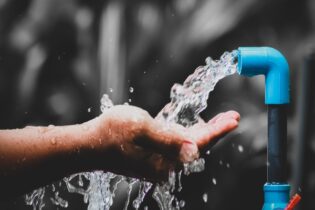With the acquisition of Calcamite, JoJo Tanks has transitioned from a water storage company to a water solutions specialist. WASA catches up with Sebasti Badenhorst, sales and marketing executive at JoJo Tanks, about navigating the sewage crisis.
Calcamite was purchased by JoJo Tanks in 2019. What was the reasoning behind this? We are focused on growing the business beyond water storage into a full water solutions company. The purchase of Calcamite falls within that strategy. Calcamite is a leader in on-site sanitation and wastewater solutions. Water and sanitation are invariably linked and that is why Calcamite is a perfect fit for JoJo Tanks. Without suitable wastewater management, we cannot have quality water. The two companies have a symbiotic relationship. Calcamite benefits from JoJo Tanks’ logistics network and JoJo Tanks has greater exposure to the commercial/industrial space via Calcamite. We are focused on growing Calcamite and have added a few additional professional skills to business. There is an increase in the uptake of on–site wastewater treatment plants in South Africa by businesses, estates, and residents. There is also increased interest in water reuse. Why is this? The Green Drop Report released last year revealed that about half of all wastewater treatment works in South Africa fail to treat sewage properly. Further, 334 of 850 municipal wastewater treatment works are in a critical state. Most of South Africa’s municipal wastewater infrastructure is operating at or over capacity. Some municipalities have even placed a moratorium on developments for this very reason. Wastewater treatment plants that are privately owned on-site are an option when looking to circumvent these moratoriums. Furthermore, with South Africa facing a 17% water supply shortfall in 2030, water reuse is becoming an important strategy. However, neighbouring countries like Mozambique, Namibia, and Botswana are a lot more receptive to on-site wastewater treatment plants. Many of the developers in South Africa are reluctant to make the investment – they are still hoping that the municipality will install a sewage connection. Furthermore, architects do not want to provide space on the site for these treatment plants. Often, in addition to the municipality not providing a sewage connection, they do not provide a stormwater connection either. Local professional teams need to tackle the sewage and water crisis head on and provide solutions. On-site wastewater treatment plants do not need to be a grudge purchase; they can differentiate developments and businesses from those that are relying on collapsing municipal services and can help create green buildings. You recently supplied the Zebediela Mall with a wastewater treatment facility. Can you provide some background on this? There is little water and wastewater infrastructure in Limpopo. Water tankers are a common sight. Zebediela Mall used to rely on the delivery of 80 000 litres of water daily. This prompted the decision by the mall to recycle its wastewater for non-potable uses. A hybrid wastewater treatment system was installed that combined a Calcamite plant and a tertiary purification plant from Waterwise. It comprised underground septic tanks with an above-ground bioreactor and tertiary purification plant, ensuring the water is of a quality fit for recycling.Given that Zebediela Mall houses a butchery and multiple fast-food outlets, a significant amount of fat is disposed of. High concentrations of fats, oils, and grease can disrupt the breakdown of organic materials in the anaerobic chamber. These concentrations can also limit oxygen transfer, meaning aerobic organisms might not get sufficient oxygen to treat the wastewater effectively, resulting in decreased chemical oxygen demand reduction. To handle the excess fats, fat traps were incorporated into the design, additional user training provided, and regular maintenance rescheduled.
Calcamite’s services include the design of plants and full construction drawings, as well as supervision of the installation and commissioning of plants. These can also be operated within the framework of maintenance contracts. The wastewater treatment plants typically undergo a minor service every three months, as well as major annual service. Calcamite provides a 25-year warranty for underground tanks and a 10-year warranty for above-ground tanks. In addition to being backed by an iconic brand, what else sets Calcamite wastewater solutions apart? Calcamite is backwards integrated; we locally manufacture roto-moulded products that are tailored for sewage containment. Other companies use their water storage tanks for sewage containment, and this is not ideal. Sewage storage tanks need to cater for hydraulic flows, be watertight and anti-corrosive, with no corners where sewage can settle. Calcamite’s roto-moulded products are joint-free and do not leak. We test our products for water-tightness. Furthermore, many competing products have to be imported and due to the size of roto-moulded containers – it is costly to import them. With Calcamite, everything is locally manufactured. Calcamite tanks are also scalable. This is particularly important to developers, who can expand the size of the wastewater treatment plant, as there is a bigger uptake of stands. What advice would you give to a developer or customer looking to install a wastewater treatment plant? Do not split the plant. For example, in an effort to try to save money, developers often opt to source their septic tanks from one supplier and bioreactors from another. The end-product is a wastewater treatment plant made up of equipment from many different suppliers. The problem is that it is then very difficult to allocate ultimate responsibility to any of these suppliers should issues with the plant arise. When looking for a supplier, seek a company that has a decent track record. A wastewater treatment plant will at some time during its life






